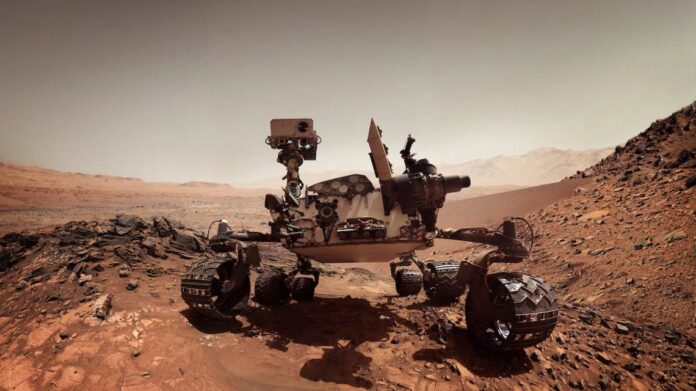The Young Astronomer (1831), an astronomy textbook, included a curious comparison: “To the people who live on Mars, this earth probably appears larger than Mars does to us.” While the thought of people on Mars sounds crazy today, 19th-century folks saw things differently. Many believed in a “plurality of inhabited worlds.” Meaning the other planets in our solar system teemed with life.
What made people think life existed on other planets? Misconstruing telescope sightings of inexplicable forms as “unnatural” and “artificially constructed.” Although you’d be harder-pressed to find people who believe in Martians today, the eye tricks haven’t stopped. Check out the recent discovery of a “fossilized book” on Mars to see what we mean.
Weird Things Seen on Mars
To say that the landscapes of Mars have played tricks with people’s eyes is an understatement. What’s more, these mind-bending images have forced people to get really creative. One of the most famous examples of seeing something in nothing is the so-called “Face on Mars” taken in 1976 by NASA’s Viking 1 Orbiter spacecraft.

Credit: NASA/JPL-Caltech/UArizona.
After developing the photos, scientists found a humanoid face staring back at them. Closer analysis revealed the strange visage to be nothing more than a rocky surface where shadows and light played, creating strangely anthropomorphic features. Soon, tabloids splattered the “Face on Mars” across their front pages, and the scientific explanation for the phenomenon got buried in sensationalism.
For those who’ve heard of pareidolia, you understand that the human eye naturally corrects random shapes, infusing them with patterns, meaning, and order. Even where these characteristics don’t exist. Pareidolia accounts for many sensational images spotted on Mars over the years. These include a floating spoon, a side profile of an elephant, the Star Trek logo, and one of the most adorable bear faces we’ve seen since the Hundred Acre Woods. So, it shouldn’t be surprising that people have now discovered a fossilized book on Mars.
The Case of the Fossilized Martian Book
Images from NASA’s Curiosity rover boast an incredible amount of detail. Some might argue a little too much. After pictures of what looks like a stone book turned up, people got excited. And with good reason. After all, the photo appears to show a fossilized book mid-page turn. But context is everything. As it turns out, the Martian book measured little more than one inch! In other words, if the book represents a proof of life, then Mars is inhabited by tiny critters that would make the dolls at Disney’s “Small World” ride look like behemoths.

Credit: NASA/JPL-Caltech/MSSS.
What else do we know about the photo? It turned up in images snapped on April 15th using the Mars Hand Lens Imager (MAHL) attached to a robotic arm. Although the book-like structure has intrigued internet users, the shape of the rock isn’t really that surprising. A NASA representative explains, “Rocks with unusual shapes are common on Mars.
What lends them their weird appearance? Their composition. Many rocks on the Red Planet come from minerals deposited when Mars housed ancient waterways. Over time, these minerals got buried in layers of softer sediment. Fast forward billions of years, and wind erosion stripped the softer sediments from these mineral deposits, creating strange geology. So, while we’d like to think the fossilized book came directly from John Carter’s Martian library, geology offers a more reasonable explanation.
By Engrd Barnett, contributor for Ripleys.com
EXPLORE THE ODD IN PERSON!
Hits: 0









